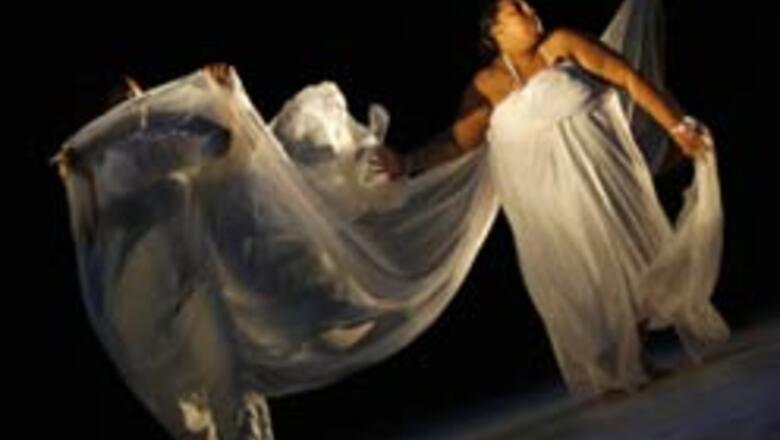
views
Havana: Ana Julia moves across the stage almost in a trance. She jumps, folds, turns to the music to end in perfect splits.
Nothing unusual for a dancer, except that this one — a member of the Cuban company Danza Voluminosa (Voluminous Dance) — weighs over 100 kg and her age is close to 40.
Among them, the eight members of the group created a decade ago by dancer and choreographer Juan Miguel Mas weigh a total of "over 600 kg," as they themselves admit in laughter.
Six women and one man, along with "Professor Mas" himself, seek to change the audience's perception of one of the most intransigent aesthetics in art - that of dance.
And beyond that, to reclaim a social space for "fat people", showing that obese bodies too can transmit vitality, emotion, tenderness and, above all, art.
"We wave the flag of diversity and the culture of peace, where obese people also have a right to express themselves through art and to speak with their bodies," Mas says as he leads a rehearsal in a room in the National Theatre in Havana.
The thinker, founder and motor of the project is very clear about Danza Voluminosa's objective: "That obese people have a place to develop artistically."
Especially, he adds, in dance, because "there are actors who are obese, there are obese singers, but it has always been very difficult for obese people to make it in professional dance, because there are established aesthetic canons for dance."
"We want to show that this kind of body too can be trained, results can be obtained from it that are interesting from an aesthetic point of view," Mas insists.
The members of Danza Voluminosa admit that it has been hard to achieve this objective, particularly in their beginnings back in 1996.
"At first people laughed, they threw things at us," dancer Barbara Valdes recalls. "Not any more. They now see us as a normal group. Not like the National Ballet of Cuba, of course, but simply as another company."
Valdes is devoted full-time to the company, and she has no qualms about discussing her weight which is over 100 kilograms.
A decade later, and with a faithful audience that fills theatres whenever they perform, things are not easy for Danza Voluminosa, and Mas complains of a lack of "institutional" support.
The company lacks an established place to practise, and since its dancers are not professional they do not receive a salary which has already caused several of them to leave the group.
"This is not a project for people to say 'poor things,' and we do not want to be excluded. We want to compete with the rest and to show what we can do. We are not going to be the poor little fat guys forever, that is not at all interesting or worthy," Mas says.
Indeed, Danza Voluminosa is not an ode to being fat, he underlines.
"Obesity is an illness. We are not in favour of obesity. On the contrary, we try to make those people seek a physical and mental equilibrium, a harmony," Mas says.
He explains that a specialist doctor supports the group and advises them on nutrition and exercise.
Mas dreams of turning Danza Voluminosa into a broader project, with "therapeutic" workshops to help overweight people.
There is one thing that all members of Danza Voluminosa agree on - the group has given every one of them internal strength.
"Now I know my body, I can move, I can do a million things that I could not do before, that limited me. The things that I can achieve now are incredible," says Xiomara Gonzalez, still fascinated despite having been with the group for 10 years.
She stresses that being with the company has earned her respect.
"More respect from my own children, from my friends who tell me I look prettier. I look at myself in the mirror and I see myself differently. I have educated myself when it comes to eating, I look after myself more in order to be able to work," she said.
Valdes, 29, is even more categorical: "I am no longer anyone without the group."
Ana Julia Marquettis' face still lights up when she explains what it meant to her to join Danza Voluminosa.
"I always liked to dance. When I was little I couldn't because I was chubby and they would not accept me. They said 'yes, you dance, but you are very chubby and you cannot take part in any gym sessions. Then, I grew up and was discouraged. I didn't think I was ever going to dance again. But I found the Prof. (Mas) and he helped me. He said 'yes, why not,' and he taught me," Marquettis recalls.
And there are some advantages. When the rehearsal is over, several members of Danza Voluminosa raid a woman who has strategically placed herself at the artists' exit of the National Theatre to sell sweets — such is the privilege of not being subjected to the tough discipline of other companies.

















Comments
0 comment